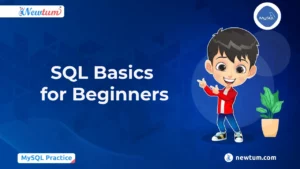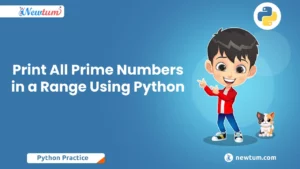Hey there, budding coder! Ever wondered what makes your favorite apps and programs tick? Today, we’re diving into the intriguing ‘Difference between Procedural and Object Oriented’ programming. These two styles form the backbone of how software is crafted, with each having its own charm and utility. Whether you’re thinking of building the next amazing app or just curious about coding, understanding these paradigms is crucial. So, grab a cup of chai, settle in, and let’s explore how Procedural and Object-Oriented programming shape the tech world. Trust me, you’ll be glad you did!
What is Procedural Programming?
Definition and Core Principles:
Procedural programming is a programming paradigm that follows a step-by-step, linear approach to solving problems. It organizes code into procedures (also known as functions or routines) that execute specific tasks. This paradigm is based on the concept of procedure calls, where the program follows a predefined sequence of instructions. Procedural programming emphasizes logic, flow control, and modularity, making it easier to develop and debug.
Characteristics of Procedural Programming:
- Top-Down Approach:
- The program is structured in a hierarchical manner, breaking the task into smaller functions that execute sequentially.
- Control flows from the main function to sub-functions in a well-defined order.
- Division into Functions:
- The code is divided into reusable functions to improve modularity and reduce redundancy.
- Each function performs a specific task, making the code easier to understand and maintain.
- Global Data Access:
- Data is often stored in global variables, which can be accessed by multiple functions.
- This can sometimes lead to data inconsistency if not handled properly.
Examples of Procedural Languages and Their Use Cases:
- C: Commonly used for system programming, embedded systems, and game development.
- FORTRAN: Used in scientific computing and numerical analysis.
- Pascal: Known for educational purposes and structured programming.
- BASIC: Often used for beginners learning programming.
Procedural programming is widely used in scenarios where structured, easy-to-follow code is required, making it a preferred choice for simple applications, scripting, and system-level programming.
What is Object-Oriented Programming (OOP)?
Definition and Core Principles:
Object-Oriented Programming (OOP) is a programming paradigm that organizes code around objects rather than functions and logic. Objects are instances of classes that encapsulate data and behavior, promoting code reusability, modularity, and scalability. OOP follows the principle of “data hiding” and “abstraction,” making programs more structured and easier to maintain. It is widely used in modern software development for building complex and scalable applications.
Key Concepts of OOP:
- Classes and Objects:
- A class is a blueprint for creating objects, defining properties (attributes) and methods (functions).
- An object is an instance of a class, with its own data and behavior.
- Example: In C++, a
Carclass can have properties likecolorandspeed, and methods likeaccelerate()andbrake().
- Encapsulation:
- The process of bundling data and methods that operate on the data into a single unit (class).
- It restricts direct access to some of an object’s components to protect data integrity.
- Example: Private variables in a class can only be accessed through public getter and setter methods.
- Inheritance:
- Allows a class (child) to inherit properties and behaviors from another class (parent), reducing code duplication.
- Example: A
Dogclass can inherit attributes from anAnimalclass.
- Polymorphism:
- Enables objects of different classes to be treated as objects of a common superclass.
- It allows method overloading (same function name, different parameters) and method overriding (redefining a method in a subclass).
- Example: A
Shapeclass can have adraw()method, which is implemented differently inCircleandRectangleclasses.
Examples of Object-Oriented Languages and Their Applications:
- C++: Used in game development, system software, and high-performance applications.
- Java: Common in enterprise applications, Android development, and web applications.
- Python: Used in web development, AI, machine learning, and automation.
- C#: Popular in game development (Unity), desktop applications, and enterprise solutions.
OOP is widely adopted in modern software development as it enhances code reuse, scalability, and maintainability.
Procedural vs Object-Oriented Programming in C++
C++ supports both procedural programming and object-oriented programming (OOP), offering flexibility to developers. Understanding their differences helps in choosing the right approach based on the project requirements.
Program Structure:
- Procedural: Organized around functions, where each function performs a specific task. The program follows a linear flow.
- OOP: Organized around objects, where each object is an instance of a class with its own data and behavior.
Data Handling:
- Procedural: Functions and data are separate; data is often stored in global variables, making it accessible throughout the program.
- OOP: Data and methods are encapsulated within objects. Access to data is controlled via access specifiers (
private,protected,public).
Modularity and Reusability:
- Procedural: Offers limited code reusability. Functions can be reused within the same program but lack flexibility for large-scale applications.
- OOP: Encourages high reusability through inheritance (reusing parent class features) and polymorphism (overriding and overloading methods). Classes can be reused across multiple programs.
Security:
- Procedural: Less secure as global variables can be modified by any function, leading to data inconsistency.
- OOP: More secure due to data hiding and encapsulation, allowing controlled access to data.
Approach:
- Procedural: Follows a top-down approach, starting from the main function and calling sub-functions sequentially.
- OOP: Follows a bottom-up approach, where objects are created first, and their interactions define the program’s flow.
Both paradigms have their use cases—procedural programming is efficient for simple, small-scale applications, while OOP is ideal for complex, scalable software development.
Advantages and Disadvantages of Procedural and Object-Oriented Programming
Procedural Programming:
Advantages:
- Simplicity and Ease of Implementation: The structured, step-by-step approach makes procedural programming easy to learn and implement.
- Efficient for Small to Medium-Sized Programs: Works well for simple applications where modularity and scalability are not primary concerns.
Disadvantages:
- Difficult to Manage as Program Size Increases: As the program grows, maintaining and debugging code becomes complex due to the lack of modular structure.
- Limited Scalability and Code Reusability: Functions are independent, and code duplication is common, making large-scale software development inefficient.
Object-Oriented Programming (OOP):
Advantages:
- Enhanced Code Reusability: Features like inheritance and polymorphism allow developers to reuse code across multiple programs.
- Better Modularity and Maintainability: Encapsulation groups related data and methods into objects, making the code easier to manage.
- Improved Security: Data hiding and access control mechanisms prevent unauthorized access to sensitive information.
Disadvantages:
- Higher Complexity: OOP requires a deeper understanding of concepts like classes, inheritance, and polymorphism, making it harder for beginners.
- Increased Memory Usage: Object creation and management require more memory and processing power compared to procedural programming.
Both paradigms have their strengths—procedural programming is ideal for simple programs, while OOP is better suited for large, complex applications.
Practical Examples in C++: Procedural vs Object-Oriented Approach
Let’s consider a simple problem: Managing a list of employees by storing their names and salaries.
Procedural Approach:
#include <iostream>
using namespace std;
void displayEmployee(string name, double salary) {
cout << "Employee: " << name << ", Salary: $" << salary << endl;
}
int main() {
string emp1 = "Alice";
double sal1 = 50000;
string emp2 = "Bob";
double sal2 = 60000;
displayEmployee(emp1, sal1);
displayEmployee(emp2, sal2);
return 0;
}
- Code Structure: Functions operate on separate data variables.
- Readability: As data grows, handling multiple variables becomes messy.
- Maintainability: Adding new attributes (e.g., department) requires modifying multiple functions.
Object-Oriented Approach:
#include <iostream>
using namespace std;
class Employee {
public:
string name;
double salary;
Employee(string n, double s) {
name = n;
salary = s;
}
void display() {
cout << "Employee: " << name << ", Salary: $" << salary << endl;
}
};
int main() {
Employee emp1("Alice", 50000);
Employee emp2("Bob", 60000);
emp1.display();
emp2.display();
return 0;
}
- Code Structure: Uses classes to group data and behavior.
- Readability: More intuitive and organized.
- Maintainability: Adding new attributes or methods is easier, making the program scalable.
OOP provides better modularity and reusability, making it more suitable for complex applications.
Did you know you can test your C++ code instantly without heavy installations? Our AI-powered cpp online compiler allows beginners to write, run, and test code efficiently. It’s the perfect companion for practicing coding anywhere, anytime. Give it a shot—you’ll love the ease it brings!
When to Use Procedural vs Object-Oriented Programming
Choosing between procedural and object-oriented programming (OOP) depends on project complexity, scalability, and maintainability requirements.
When to Use Procedural Programming:
- Small to Medium-Sized Programs: Ideal for scripts, utility programs, and simple automation tasks.
- Performance-Critical Applications: Efficient when speed and low memory usage are top priorities, such as system utilities and embedded systems.
- Linear Workflows: Suitable for tasks that follow a step-by-step execution, like mathematical computations or batch processing.
- One-Time or Short-Lived Projects: Best for applications that do not require future expansion or maintenance.
When to Use Object-Oriented Programming (OOP):
- Large and Complex Applications: Essential for enterprise applications, game development, and scalable software.
- Projects Requiring Code Reusability: Inheritance and polymorphism help minimize redundancy and improve maintainability.
- Security-Centric Applications: Encapsulation protects data by restricting direct access.
- Team-Based Development: OOP’s modular approach allows multiple developers to work on different classes independently.
Guidelines for Choosing the Right Approach:
- If the program is simple and function-driven → Use procedural programming.
- If the application requires scalability, reusability, and maintainability → Use OOP.
- If performance is a primary concern (e.g., embedded systems) → Procedural programming is preferable.
- If modularity and security are needed (e.g., web applications, banking systems) → OOP is the better choice.
By evaluating project size, complexity, and future growth, developers can select the most suitable paradigm for efficient software development.
Conclusion
In conclusion, understanding the ‘Difference between Procedural and Object Oriented in C++’ is crucial for coding success. Each paradigm has its own unique strengths. Explore more with Newtum to deepen your knowledge and enhance your skills. Start your learning journey today!
Edited and Compiled
This blog was compiled and edited by Rasika Deshpande, who has over 4 years of experience in content creation. She’s passionate about helping beginners understand technical topics in a more interactive way.



